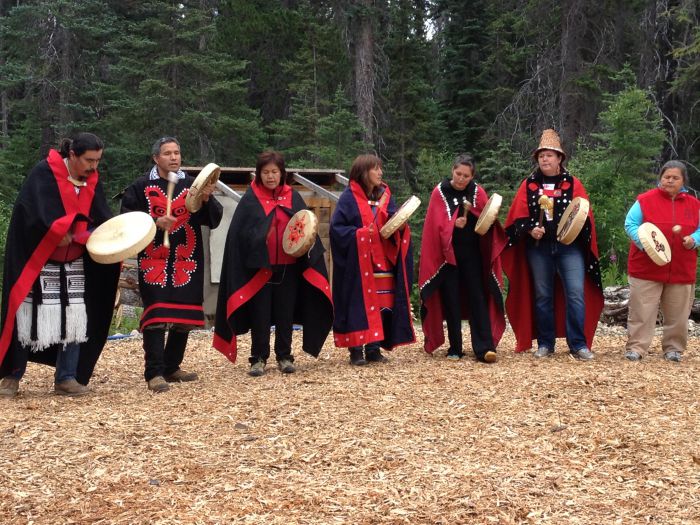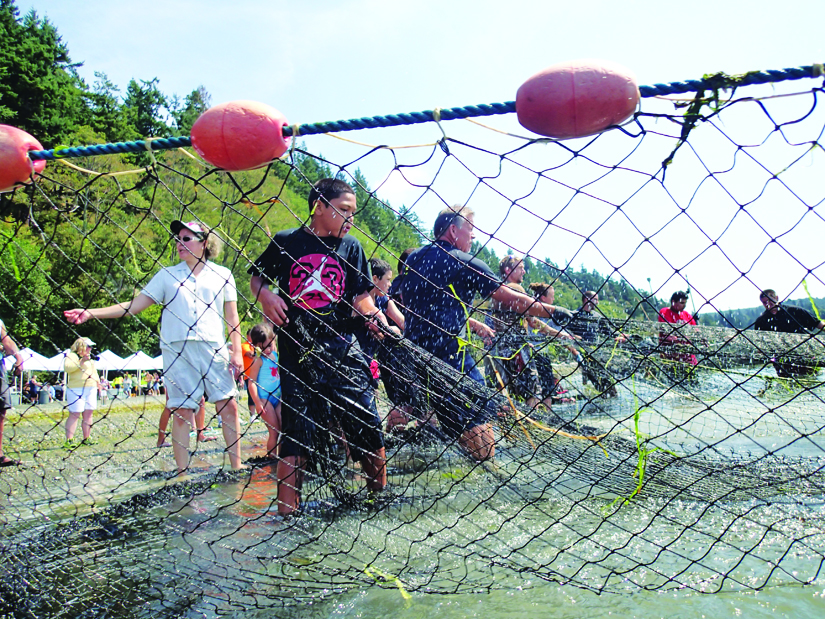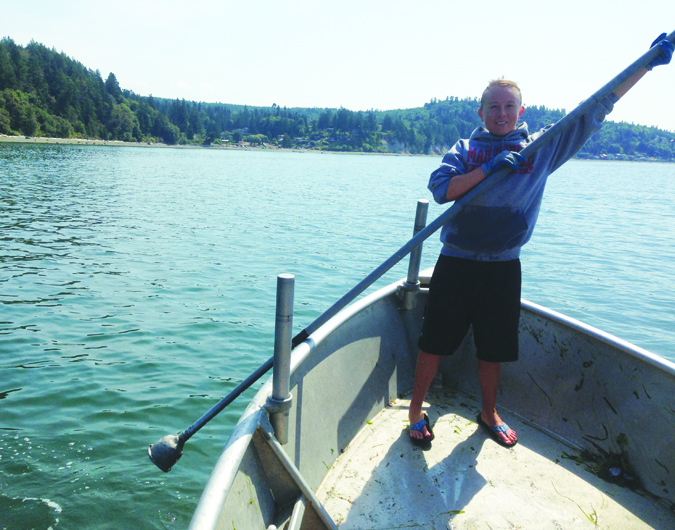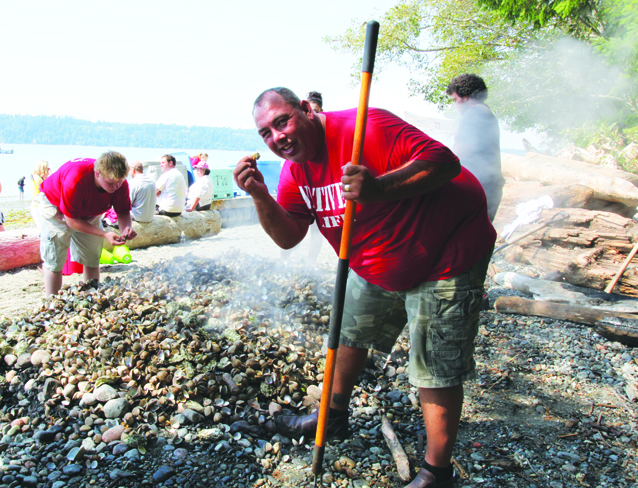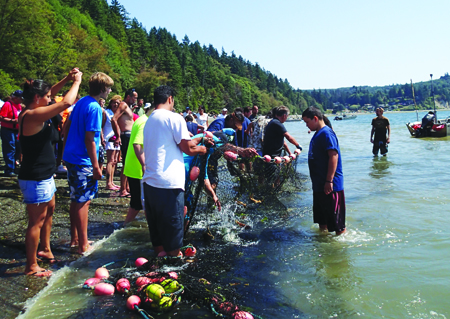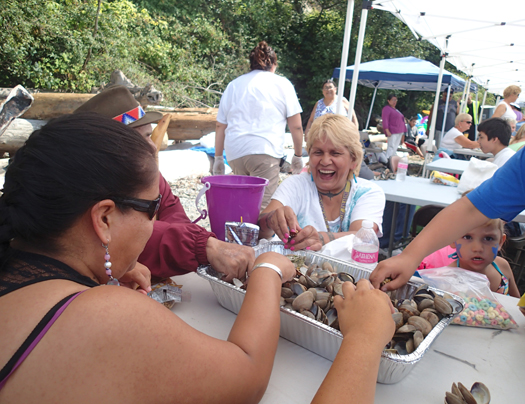 By Jonathan Latham, GreenMedInfo
By Jonathan Latham, GreenMedInfo
Imagine an international mega-deal. The global organic food industry agrees to support international agribusiness in clearing as much tropical rainforest as they want for farming. In return, agribusiness agrees to farm the now-deforested land using organic methods, and the organic industry encourages its supporters to buy the resulting timber and food under the newly devised “Rainforest Plus” label. There would surely be an international outcry.
Virtually unnoticed, however, even by their own membership, the world’s biggest wildlife conservation groups have agreed exactly to such a scenario, only in reverse. Led by the World Wide Fund for Nature (WWF), many of the biggest conservation nonprofits including Conservation International and theNature Conservancy have already agreed to a series of global bargains with international agribusiness. In exchange for vague promises of habitat protection, sustainability and social justice, these conservation groups are offering to greenwash industrial commodity agriculture.
The big conservation nonprofits don’t see it that way of course. According to WWF ’Vice President for Market Transformation’ Jason Clay, the new conservation strategy arose from two fundamental realizations.
The first was that agriculture and food production are the key drivers of almost every environmental concern. From issues as diverse as habitat destruction to over-use of water, from climate change to ocean dead zones, agriculture and food production are globally the primary culprits. To take one example, 80-90% of all fresh water abstracted by humans is for agriculture (e.g. FAO’s State of the World’s Land and Water report ).
This point was emphasized once again in a recent analysis published in the scientific journal Nature. The lead author of this study was Professor Jonathan Foley (Foley et al 2011). Not only is Foley the director of the University of Minnesota-based Institute on the Environment, but he is also a science board member of the Nature Conservancy.
The second crucial realization for WWF was that forest destroyers typically are not peasants with machetes but national and international agribusinesses with bulldozers. It is the latter who deforest tens of thousands of acres at a time. Land clearance on this scale is an ecological disaster, but Claire Robinson of Earth Open Source points out it is also “incredibly socially destructive”, as peasants are driven off their land and communities are destroyed. According to the UN Permanent Forum on Indigenous Issues 60 million people worldwide risk losing their land and means of subsistence from palm plantations.
By about 2004, WWF had come to appreciate the true impacts of industrial agriculture. Instead of informing their membership and initiating protests and boycotts, however, they embarked on a partnership strategy they call ‘market transformation’.
Market Transformation
With WWF leading the way, the conservation nonprofits have negotiated approval schemes for “Responsible” and “Sustainable” farmed commodity crops. According to Clay, the plan is to have agribusinesses sign up to reduce the 4-6 most serious negative impacts of each commodity crop by 70-80%. And if enough growers and suppliers sign up, then the Indonesian rainforests or the Brazilian Cerrado will be saved.
The ambition of market transformation is on a grand scale. There are schemes for palm oil (theRoundtable on Sustainable Palm Oil; RSPO), soybeans (the Round Table on Responsible Soy; RTRS), biofuels (the Roundtable on Sustainable Biofuels), Sugar (Bonsucro) and also for cotton, shrimp, cocoa and farmed salmon. These are markets each worth many billions of dollars annually and the intention is for these new “Responsible” and Sustainable” certified products to dominate them.
The reward for producers and supermarkets will be that, reinforced on every shopping trip, “Responsible” and “Sustainable” logos and marketing can be expected to have major effects on public perception of the global food supply chain. And the ultimate goal is that, if these schemes are successful, human rights, critical habitats, and global sustainability will receive a huge and globally significant boost.
The role of WWF and other nonprofits in these schemes is to offer their knowledge to negotiate standards, to provide credibility, and to lubricate entry of certified products into international markets. On its UK website, for example, WWF offers its members the chance to “Save the Cerrado” by emailing supermarkets to buy “Responsible Soy”. What WWF argues will be a major leap forward in environmental and social responsibility has already started. “Sustainable” and “Responsible” products are already entering global supply chains.
Reputational Risk
For conservation nonprofits these plans entail risk, one of which is simple guilt by association. The Round Table on Responsible Soy (RTRS) scheme is typical of these certification schemes. Its membership includes WWF, Conservation International, Fauna and Flora International, the Nature Conservancy, and other prominent nonprofits. Corporate members include repeatedly vilified members of the industrial food chain. As of January 2012, there are 102 members, including Monsanto, Cargill, ADM, Nestle, BP and UK supermarket ASDA.
That is not the only risk. Membership in the scheme, which includes signatures on press-releases and sometimes on labels, indicates approval for activities that are widely opposed. The RTRS, for example, certifies soybeans grown in large-scale chemical-intensive monocultures. They are usually GMOs. They are mostly fed to animals. And they originate from countries with hungry populations. When 52% ofAmericans think GMOs are unsafe and 93% think GMOs ought to be labeled, for example, this is a risk most organizations dependent on their reputations probably would not consider.
The remedy for such reputational risk is high standards, rigorous certification and watertight traceability procedures. Only credibility at every step can deflect the seemingly obvious suspicion that the conservation nonprofits have been hoodwinked or have somehow ‘sold out’.
So, which one is it? Are “Responsible” and “Sustainable” certifications indicative of a genuine strategic success by WWF and its fellows, or are the schemes nothing more than business as usual with industrial scale greenwashing and a social justice varnish?
Low and Ambiguous Standards
The first place to look is the standards themselves. RTRS standards (version 1, June 2010), to continue with the example of soybeans, cover five ‘principles’. Principle 1 is: Legal Compliance and Good Business Practices. Principle 2 is: Responsible Labour Conditions. Principle 3 is: Responsible Community Relations. Principle 4 is Environmental Responsibility. Principle 5 is Good Agricultural Practice.
Language typical of the standards includes, under Principle 2, Responsible Labour Conditions, section 2.1.1 “No forced, compulsory, bonded, trafficked. or otherwise involuntary labor is used at any stage of production”, while section 2.4.4 states “Workers are not hindered from interacting with external parties outside working hours.”
Under Principle 3: Responsible Community Relations, section 3.3.3 states: “Any complaints and grievances received are dealt with in a timely manner.”
Under Principle 4: Environmental Responsibility, section 4.2 states “Pollution is minimized and production waste is managed responsibly” and section 4.4 states “Expansion of soy cultivation is responsible”.
Under Principle 5: Good Agricultural Practice, Section 5.9 states “Appropriate measures are implemented to prevent the drift of agrochemicals to neighboring areas.”
These samples illustrate the tone of the RTRS principles and guidance.
There are two ways to read these standards. The generous interpretation is to recognize that the sentiments expressed are higher than what are actually practiced in many countries where soybeans are grown, in that the standards broadly follow common practice in Europe or North America. Nevertheless, they are far lower than organic or fairtrade standards; for example they don’t require crop rotation, or prohibit pesticides. Even a generous reading also needs to acknowledge the crucial point that adherence to similar requirements in Europe and North America has contaminated wells, depleted aquifers, degraded rivers, eroded the soil, polluted the oceans, driven species to extinction and depopulated the countryside—to mention only a few well-documented downsides.
There is also a less generous interpretation of the standards. Much of the content is either in the form of statements, or it is merely advice. Thus section 4.2 reads “Pollution is minimized and production waste is managed responsibly.” Imperatives, such as: must, may never, will, etc., are mostly lacking from the document. Worse, key terms such as “pollution”, “minimized”, “responsible” and “timely” (see above) are left undefined. This chronic vagueness means that both certifiers and producers possess effectively infinite latitude to implement or judge the standards. They could never be enforced, in or out of court.
Dubious Verification and Enforcement
Unfortunately, the flaws of RTRS certification do not end there. They include the use of an internal verification system. The RTRS uses professional certifiers, but only those who are members of RTRS. This means that the conservation nonprofits are relying on third parties for compliance information. It also means that only RTRS members can judge whether a principle was adhered to. Even if they consider it was not, there is nothing they can do, since the RTRS has no legal status or sanctions.
The ‘culture’ of deforestation is also important to the standards. Rainforest clearance is often questionably legal, or actively illegal, and usually requires removing existing occupants from the land. It is a world of private armies and bribery. This operating environment makes very relevant the irony under which RTRS members, under Principle 1, volunteer to obey the law. The concept of volunteering to obey the law begs more than a few questions. If an organization is not already obeying the law, what makes WWF suppose that a voluntary code of conduct will persuade it? And does obeying the law meaningfully contribute to a marketing campaign based on responsibility?
Of equal concern is the absence of a clear certification trail. Under the “Mass Balance” system offered by RTRS, soybeans (or derived products) can be sold as “Responsible” that were never grown under the system. Mass Balance means vendors can transfer the certification quantity purchased, to non-RTRS soybeans. Such an opportunity raises the inherent difficulties of traceability and verification to new levels.
How Will Certification Save Wild Habitats?
A key stated goal of WWF is to halt deforestation through the use of maps identifying priority habitat areas that are off-limits to RTRS members. There are crucial questions over these maps, however. Firstly, even though soybeans are already being traded they have yet to be drawn up. Secondly, the maps are to be drawn up by RTRS members themselves. Thirdly, RTRS maps can be periodically redrawn. Fourthly, RTRS members need not certify all of their production acreage. This means they can certify part of their acreage as “Responsible”, but still sell (as “Irresponsible”?) soybeans from formerly virgin habitat. This means WWF’s target for year 2020 of 25% coverage globally and 75% in WWF’s ‘priority areas’ would still allow 25% of the Brazilian soybean harvest to come from newly deforested land. And of course, the scheme cannot prevent non-members, or even non-certified subsidiaries, from specializing in deforestation (1).
These are certification schemes, therefore, with low standards, no methods of enforcement, and enormous loopholes (2). Pete Riley of UK GM Freeze dubs their instigator the “World Wide Fund for naiveté” and believes “the chances of Responsible soy saving the Cerrado are zero.” (3). Claire Robinson agrees: “The RTRS standard will not protect the forests and other sensitive ecosystems. Additionally, it greenwashes soy that’s genetically modified to survive being sprayed with quantities of herbicide that endanger human health and the environment.” There is even a website (www.toxicsoy.org) dedicated to exposing the greenwashing of GMO Soy.
Many other groups apparently share that view. More than 250 large and small sustainable farming, social justice and rainforest preservation groups from all over the world signed a “Letter of Critical Opposition to the RTRS” in 2009. Signatories included the Global Forest Coalition, Friends of the Earth, Food First, the British Soil Association and the World Development Movement.
Other commodity certifications involving WWF have also received strong criticism. The Mangrove Action Project in 2008 published a ‘Public Declaration Against the Process of Certification of Industrial Shrimp Aquaculture‘ while the World Rainforest Movement issued ‘Declaration against the Roundtable on Sustainable Palm Oil (RSPO)‘, signed by 256 organizations in October 2008.
What Really Drives Commodity Certification?
Commodity certification is in many ways a strange departure for conservation nonprofits. In the first place the big conservation nonprofits are more normally active in acquiring and researching wild habitats. Secondly, as membership organizations it is hard to envisage these schemes energizing the membership—how many members of the Nature Conservancy will be pleased to find that their organization has been working with Monsanto to promote GM crops as “Responsible”? Indeed, one can argue that these programs are being actively concealed from their members, donors and the public. From their advertising, their websites, and their educational materials, one would presume that poachers, population growth and ignorance are the chief threats to wildlife in developing countries. It is not true, however, and as Jason Clay and the very existence of these certification schemes make clear, senior management knows it well.
In public, the conservation nonprofits justify market transformation as cooperative; they wish to work with others, not against them. However, they have chosen to work preferentially with powerful and wealthy corporations. Why not cooperate instead with small farmers’ movements, indigenous groups, and already successful standards, such as fairtrade, organic and non-GMO? These are causes that could use the help of big international organizations. Why not, with WWF help, embed into organic standards a rainforest conservation element? Why not cooperate with your membership to create engaged consumer power against habitat destruction, monoculture, and industrial farming? Instead, the new “Responsible” and “Sustainable” standards threaten organic, fairtrade, and local food systems—which are some of the environmental movement’s biggest successes.
One clue to the enthusiasm for ‘market transformation’ may be that financial rewards are available. According to Nina Holland of Corporate Europe Observatory, certification is “now a core business” for WWF. Indeed, WWF and the Dutch nonprofit Solidaridad are currently receiving millions of euros from the Dutch government (under its Sustainable Trade Action Plan) to support these schemes. According to the plan 67 million euros have already been committed, and similar amounts are promised (4).
The Threat From the Food Movement
Commodity certification schemes like RTRS can be seen as an inability of global conservation leadership to work constructively with the ordinary people who live in and around wild areas of the globe; or they can be seen as a disregard for fairtrade and organic labels; or as a lost opportunity to inform and energize members and potential members as to the true causes of habitat destruction; or even as a cynical moneymaking scheme. These are all plausible explanations of the enthusiasm for certification schemes and probably each plays a part. None, however, explains why conservation nonprofits would sign up to schemes whose standards and credibility are so low. Especially when, as never before, agribusiness is under pressure to change its destructive social and environmental practices.
The context of these schemes is that we live at an historic moment. Positive alternatives to industrial agriculture, such as fairtrade, organic agriculture, agroecology and the System of Rice Intensification, have shown they can feed the planet, without destroying it, even with a greater population. Consequently, there is now a substantial international consensus of informed opinion (IAASTD) that industrial agriculture is a principal cause of the current environmental crisis and the chief obstacle to hunger eradication.
This consensus is one of several roots of the international food movement. As a powerful synergism of social justice, environmental, sustainability and food quality concerns, the food movement is a clear threat to the long-term existence of the industrial food system. Incidentally, this is why big multinationals have been buying up ethical brands.
Under these circumstances, evading the blame for the environmental devastation of the Amazon, Asia and elsewhere, undermining organic and other genuine certification schemes, and splitting the environmental movement must be a dream come true for members of the industrial food system. A true cynic might surmise that the food industry could hardly have engineered it better had they planned it themselves.
Who Runs Big Conservation?
To guard against such possibilities, nonprofits are required to have boards of directors whose primary legal function is to guard the mission of the organization and to protect its good name. In practice, for conservation nonprofits this means overseeing potential financial conflicts and preventing the organization from lending its name to greenwashing.
So, who are the individuals guarding the mission of global conservation nonprofits? US-WWF boasts (literally) that its new vice-chair was the last CEO of Coca-Cola, Inc. (a member of Bonsucro) and that another board member is Charles O. Holliday Jr., the current chairman of the board of Bank of America, who was formerly CEO of DuPont (owner of Pioneer Hi-Bred International, a major player in the GMO industry). The current chair of the executive board at Conservation International, is Rob Walton, better known as chair of the board of WalMart (which now sells ‘sustainably sourced‘ food and owns the supermarket chain ASDA). The boards of WWF and Conservation International do have more than a sprinkling of members with conservation-related careers. But they are heavily outnumbered by business representatives. On the board of Conservation International, for example, are GAP, Intel, Northrop Grumman, JP Morgan, Starbucks and UPS, among others.
At the Nature Conservancy its board of directors has only two members (out of 22) who list an active affiliation to a conservation organization in their board CV (Prof Gretchen Daly and Cristian Samper, head of the US Museum of Natural History). Only one other member even mentions among their qualifications an interest in the subject of conservation. The remaining members are, like Shona Brown, an employee of Google and a board member of Pepsico, or Margaret Whitman who is the current President and CEO of Hewlett-Packard, or Muneer A Satter, a managing director of Goldman Sachs.
So, was market transformation developed with the support of these boards or against their wishes? The latter is hardly likely. The key question then becomes: did these boards in fact instigate market transformation? Did it come from the very top?
Never Ending
Leaving aside whether conservation was ever their true intention, it seems highly unlikely that WWF and its fellow conservation groups will leverage a positive transformation of the food system by bestowing “Sustainable” and “Responsible” standards on agribusiness. Instead, it appears much more likely that, by undermining existing standards and offering worthless standards of their own, habitat destruction and human misery will only increase.
Market transformation, as envisaged by WWF, nevertheless might have worked. However, WWF neglected to consider that successful certification schemes start from the ground up. Organic and fairtrade began with a large base of committed farmers determined to fashion a better food system. Producers willingly signed up to high standards and clear requirements because they believed in them. Indeed, many already were practicing high standards without certification. But when big players in the food industry have tried to climb on board, game the system and manipulate standards, problems have resulted, even with credible standards like fairtrade and organic. At some point big players will probably undermine these standards. They seem already to be well on the way, but if they succeed their efforts will only have proved that certification standards can never be a substitute for trust, commitment and individual integrity.
The only good news in this story is that it contradicts fundamentally the defeatist arguments of the WWF. Old-fashioned activist strategies, of shaming bad practice, boycotting products and encouraging alternatives, do work. The market opportunity presently being exploited by WWF and company resulted from the success of these strategies, not their failure. Multinational corporations, we should conclude, really do fear activists, non-profits, informed consumers, and small producers all working together.













